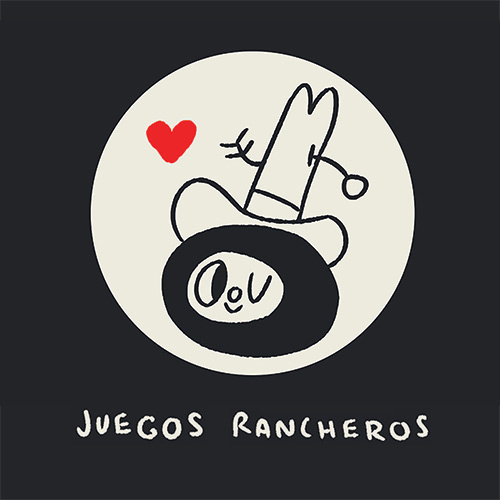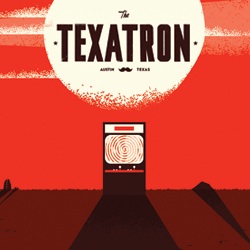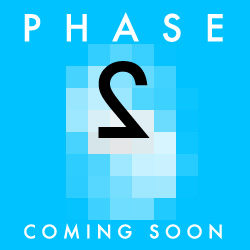GIMME INDIE GAME: MAKE MINE META WITH THIS IS THE ONLY LEVEL & UPGRADE COMPLETE
Between 2007 and 2008 there were two games that were more remarkable for what they did than what they were, and what they were were games doing commentary on the act and experience of playing games themselves.
The first was, of course, You Have To Burn The Rope, which gave you its FAQ, walkthrough, and spoiler-alert straight up front, skipped essentially all of the formalities of the game itself, and then rewarded you with a love-song ode to how brilliant you were at doing what it wouldn’t let you do otherwise. It was a one-off joke, but one smart enough to be selected for and turn heads with a selected as a finalist at the Independent Games Festival.
The second, less indie-industry-shattering game was John ‘jmtb02‘ Cooney’s Achievement Unlocked, a game that rested itself entirely on the Microsoft-created monster of playing for and focusing on the meta-game of satisfying secondary goals.
And so, a year or more on, two more games have emerged that take that meta-gaming to the next level. The first, and newest — again from Cooney (and even starring Unlocked‘s now-beloved elephant), and again telling you what it is up front, is This Is The Only Level (top), which it is, though split up into some 30 takes on the same in-game terrain. Better you discover the best of its surprises for yourself, but it encapsulates some truly devious expectation-undermining throughout, and while perhaps less successful than Unlocked (wholly relying on monotony of its single task to drive its point home, where even the former rewarded careful exploration of its own single level), still will be one of the best 10 minute browser-games of the month.
And, finally, the culmination of all the games above: Antony Lavelle’s Upgrade Complete, from the same author as the monochrome-navigating web series Shift (which just recently came to the iPhone, as well). The trick here: starting the game rewards you with nothing but a blank screen. No developer logo, no title menu, no loading, no nothing, and every bit, piece, and even-better-bit of the game itself has to be purchased by playing.
Obviously, the game makes the minor concession of giving you some cash to spare to get to the ‘game’ itself — a simplistic top-down scrolling shooter — but from there, every, well, upgrade, be it increasing graphic fidelity through generational shifts of 8- to 64-bit, adding sound, credits, and piecing together a deadlier ship to make collecting more money even easier, has to be earned and bought.
Like the above games, it’s excessively linear by design, the game itself not actually being as important as the meta-game, but, like Burn The Rope, its true ending is similarly my-god-aren’t-you-amazing cockle-warming, though this time, probably slightly undercut by the fact that you had to pay them to tell you in the first place. But what could be more meta than that?
This Is The Only Level [John Cooney]
Upgrade Complete [Antony Lavelle]
See more posts about: Gimme Indie Game, Offworld Originals
GIMME INDIE GAME: THE DESTRUCTIVE/CONSTRUCTIVE CALAMITY OF FLASHBANG’S CRANE WARS
One of the most fascinating aspects of Crane Wars — the newly released game from Minotaur China Shop and Blush creators Flashbang — is that, for essentially the first time, we’ve been able to watch the development of the game from its very earliest conception straight through to completion.
That early prototype video and alpha trial were effective as very base technology: the physics were there, the crane worked well, the destruction was fun, but what they weren’t was a game, and it’s been just as fun watching the bits that made it such being layered on top til now.
What’s come out the other side, is, put plainly, the best game the team have done since Minotaur (we’ll rightfully chalk up Paper Moon‘s success to original creator Infinite Ammo): a game that’s just as beautifully and deliberately balanced between destruction as much as the construction at its core.
What Flashbang have done is take that original crane demo and lattice-build a rigid structure over top: now, your static crane oversees a site with a tic-tac-toe grid of possible foundations and three spawn points of new “floors”. Very much akin to one-button mobile favorite Tower Bloxx, your new goal is to stack those floors in any given arrangement until the spawn point lets loose a ‘roof’ — stack that roof on top and your ramshackle blockwork becomes a nice, beautiful, more invulnerable new skyscraper.
Why invulnerable? Because at the adjacent lot, a group of ruthless (and vaguely French) scabs are threatening your staunchly union-ized business with both hurled insults and, more often, hurled dumptrucks, barrels, and flaming blocks of skyscraper.
And so here lies in the destructive rewards, and the Wars of the title: for as much as you can gain ever increasingly combo-multiplied high scores from proper stacking, you can take the secondary path of ensuring the scabs never fully manage to keep their buildings intact by hurling your own rubble into their lot, with new combos for bringing down buildings and achievements for covering their spawn points.
Most importantly, Crane Wars is one of the ‘stickiest’ games the studio’s released in some time, as well: the grid system opens up a number of trial and error strategies that beg to be discovered — setting up a wall of defensive completed scrapers seems to be an initial best bet until you discover it also stifles your best throws, etc. — and the usual Blurst timer (here represented by a dwindling budget) is an ever present reminder that there were always precious shortcuts and efficiencies you could have taken this go-round.
With any luck, this’ll become the new web favorite it deserves to be: as I guessed several days ago, it’s the best indie development we’ll see all week (and the latest best instantly-hummable indie background score, courtesy Infinite Ammo’s Alec Holowka), and barring some outrageous upset, the bar’s set very high for game of the month.
Crane Wars [Flashbang]
See more posts about: Blurst, Flashbang, Gimme Indie Game, Offworld Originals
GIMME INDIE GAME: THE SILHOUETTED SLAPSTICK OF LITTLE WHEEL
The interesting thing about Little Wheel — the latest Flash game from heretofore essentially unknown Slovakian team OneClickDog — is just how fervent the studio is about making sure you finish their game.
Put off from point and click adventures for their 2×2 pixel hot-spot hunts? OneClickDog’s happy to encircle every possible interactive point in glowing grey. Even with that, not sure which order to click things in? Have a peek at the upper right of the screen, where they’ve got a button marked WALKTHROUGH.
But that’s not to say that there’s that much challenge there for a seasoned adventure vet, and even that’s not to say that the game is an out and out breeze.
What the game is is probably the most easily accessible and effortlessly charming little adventure since we last left off with Windosill: all drawn out in silhouette, 10,000 years after a power generator failure knocked out an entire planet of worker drones, your little accidentally awoken bot makes his way through a handful of screens to restore order.
And the best part of Little Wheel? It’s that for a hero, and even in the short amount of time it takes, he manages to make a hell of a mess along the way in cute slapstick fashion. Give the game 20 minutes of your day: that’s about all it asks, and it gives a lot back in return.
Little Wheel [OneClickDog, who apparently, one day after the game premiered, have a new adventure on the verge of launching that I now anxiously await]
See more posts about: Gimme Indie Game, Offworld Originals
GIMME INDIE GAME: THE HIDDEN DEPTHS OF ADAM ATOMIC’S FATHOM (WITH BONUS MP3!)
Like a number of the “less said, the better” indie games in recent months (see also: Gravity Bone, etc.), the best thing Adam ‘Atomic‘ Saltsman’s just-released web game Fathom has going for it is the one secret that it would be a letdown to reveal before you’d even had a chance to play.
Suffice it to say: there’s considerable serenity packed deep within its outwardly militant core (a core guarded by, as you’ll see, this decade’s best flower-pot-security-bots), and a disquieting ending that its creator assures me shouldn’t sink my heart as much as it does.
If Saltsman’s name rings a bell it’s because — along with collaborators Infinite Ammo and Flashbang — he had a hand in designing recent Blurst release Paper Moon, as well as physics grappler Gravity Hook, the recently mentioned Dr. Dobbs promotional game, and the iPhone’s original word game best-seller Wurdle.
Saltsman’s pixels are effortlessly charming, his underlying concept — once you “get it” — is genuinely quite brilliant (here’s a hint, if you find yourself a little lost in the dark: the things around you? They’re trying to tell you something), and the game’s chiptune-prog score by Danny ‘dB Soundworks‘ Baranowsky (previously featured for his work on Flashbang’s Blush) works perfectly in concert with the rest to make a fantastic, thoughtful short-story of a game.
As a bonus, Saltsman and dB have given Offworld an exclusive track from Fathom‘s soundtrack, “Boss of Doooooom”, which you’ll recognize from the struggle pictured above. Stream it below, or download directly here.
[mejsaudio src=”http://venuspatrol.com/ofiles/danny_B_-_Fathom_-_Boss_of_Doooooom.mp3″]
Fathom [Adam Atomic, dB Soundworks]
See more posts about: Adamatomic, Danny B, Gimme Indie Game, Offworld Originals
GIMME INDIE GAME: THE PLAYABLE POETRY OF DANIEL BENMERGUI’S TODAY I DIE
If you’ve played Daniel Benmergui’s I Wish I Were The Moon — one of Offworld’s first top-shelf recommended indie games — then you know generally what to expect from his just-released Today I Die.
Hushed and humbly poetic, Moon gave players a small time-based sandbox with which to manipulate variables in an effort to discover one of several outcomes, but Moon‘s only part of Benmergui’s evolution that brought him to this point.
His Storyteller, released shortly after Moon is the other key to that puzzle. Like Moon, it’s an exercise in variable outcomes, but in contrast, it’s one in which all of your decisions are made at your leisure, and where all outcomes are shown on the fly in real-time.
Somewhere in between, then, is Today I Die: like Storyteller, you’re free to experiment with your variables — here both represented by the actors and the very words themselves — to shift and morph your surroundings, but, unlike either of the earlier games, these lead to sudden shifts that demand faster attention. Nothing, though, is outright undo-able, until the very last moments of the game (so far as I’ve found in a number of repeat plays) but it is the most ‘action-oriented’ of the three, for as much as you can call it that.
The most fascinating part of Benmergui’s indie output is watching him work at ideas in which he’s essentially alone, or at least on this digestible a scale: it’s all the volumes of open-world and meaningfully-consequential design challenges that Deus Ex and Far Cry 2 have tried to tackle reduced to one delicate little pamphlet.
As above, it’s a game that demands replayability, though not necessarily to explore parallel realities (as with Storyteller), or to tick off X amount of endings (as with Moon — though I am curious if there are more than the two I found, I could easily be wildly underestimating the options), but more to reflect on what the variable flickers are trying to say, rather than the rote mechanical meaning of how you do them — to dive further into its poetry rather than its playability.
Today I Die [ludomancy]
[As a sidenote, Benmergui is experimenting with a patronage system, with an anonymous donor helping him keep the game on a “quiet, ad-free website”, but in return, he’s set up this page to accept donations of three dollars and up for a downloadable package of all games mentioned above, with special bonuses to those that donate even more — do him the favor of at least making the minimal donation: he’s a voice in games we definitely want to support.]
See more posts about: Gimme Indie Game, Offworld Originals
GIMME INDIE GAME: THE DEPTH-DEFYING PLANAR-PLATFORMING OF PAPER MOON
There was always a certain — but gentle — cloud that hung over the announcement that Infinite Ammo and Adam Saltsman‘s multi-planar fruit collecting platformer Paper Moon would be brought to Flashbang’s online portal Blurst.
Not one of quality, mind — as players had already been able to get their hands on the game after its Gamma 3D debut — but one of how properly a platformer would fit into the Blurst framework, which relies on three to five minute quick burst arcade play and generally is targeted toward high score competition and achievements.
The subsequent announcement that the game would come with a timer, I will admit, struck a little pang of fear, as I’m not generally one for having my exploration curbed by arbitrary time limits (it’s a cardinal sin up far in the ranks alongside auto-scrolling levels). But, it turns out, that fear was entirely misplaced, and, freshly released at the tail end of last week, Paper Moon is a fantastic addition to the service.
How do you morph a short platformer into a necessarily replayable experience then? The answer is branches: a few handfuls of varied paths that can be taken at several points in the game and require repeat performances to see, and a combo-meter collection system that amplifies your score as you gain the experience to better judge how best to maximize your time in an unbroken line throughout its world.
And it is a game you’ll want to play again back to back, not least because you likely won’t finish it on your first or second or even third go, and even if you do, the tantalizingly missed paths on your map screen will beckon you immediately back through.
If there are any frustrations with the game, it’s only in losing the original’s stereoscopic hook and having to rely on shading to re-orient your next potential leap with the proper paper plane (a few test-run pops also help), but again, repeat plays acclimate you to the process and reduce that end-level/nearly-out-of-time stress.
But what we gained in losing the red-blue shift and going full monochrome, and what’s underscored by Infinite Ammo co-founder Alec Holowka’s new score, is a game that’s roughly and wonderfully the stylistic equivalent of an early silent movie: an easily consumable little tale of derring-do and intrigue that’s essentially peerless in the indie scene today.
Paper Moon home [Blurst, Infinite Ammo]
- The cardboard sea: see Infinite Ammo’s new Paper Moon in motion
- Star power: Infinite Ammo, Flashbang bringing Paper Moon to Blurst …
- Bringing Gamma home to you – Offworld
- Infinite Ammo teases their Marian-ette – Offworld
- The latest look at Infinite Ammo's iPhone puzzler Heroes …
- We could be thrilled: in-depth with Infinite Ammo iPhone puzzler …
- Happy pills: Fez, Aquaria devs collaborating on new iPhone game …
- What have we here: another teaser for Fez/Aquaria devs' iPhone …
See more posts about: Adamatomic, Gimme Indie Game, Infinite Ammo, Offworld Originals
GIMME INDIE GAME: THE HYPER-REAL SURREALITY OF VECTORPARK’S WINDOSILL
Like James ‘presstube/insertsilence’ Paterson, the Flash creations Patrick Smith has been creating over the past five plus years as ‘Vectorpark‘ haven’t quite penetrated the games industry’s consciousness as much as they should have, and maybe fair enough: his earliest creations like Levers and especially later updates like FeedTheHead were as much interactive toys as anything (the line’s blurrier with Park, which initially bears an uncanny thematic resemblance to Amanita‘s later Samorost).
But that’s fully changed with Windosill, Smith’s latest creation, where each single screen has a single goal to progress to the next: namely, finding a single pink cube via simple point/click/drag interactions which will unlock the right-hand door of each diorama.
But even still, it’s not necessarily the rules of the game that are the draw as much as the successively more involved exploration that takes place in each area to get to that block, all a culmination of (and with overt throwbacks to) objects of Smith’s earlier output.
And that exploration wouldn’t be nearly as rewarding were it not for Smith’s ability to somehow have teased out (with the aid, I can only conclude, of some dark, black magic) easily the greatest sense of physicality Flash (still, remember, an essentially 2D toolkit) has ever produced. Everything has such a well defined heft and tension, everything responds to your prodding with just the right amount of ‘squishiness’, that even its most surreal concoctions feel fantastically alive.
The free demo version of the game will get you roundabout halfway through, and, it should be said up front, it’s absolutely worth the $3 pittance Smith asks to continue on to the end, as there’s one single screen — and it kills me to not splash it all over the page here — that so perfectly both bends the rules of the game up to that point and typifies that magically-alive hyper-reality that it’s worth the admission alone.
Download Windosill here, explore Smith’s back catalog via Vectorpark proper, and see more of his traditional art via Smithpixdaily and his now defunct co-edited magazine The Ganzfeld.
Windosill [Vectorpark]
See more posts about: Gimme Indie Game, Offworld Originals, Vectorpark, Windosill
GIMME INDIE GAME: THE ALLURING LANGUAGE OF COSMIND’S GLUM BUSTER
In setting out to write this, I spent too much time thinking about which screenshots to use — whether I should keep the earliest grabs, move forward through the various worlds, whether I’d be spoiling anything in doing so — but in the end it hardly matters, because there’s almost no part of Glum Buster‘s essence you can properly capture in static shots.
What you can get a sense of, I suppose, is its curiously drawn world: rough-sketched solid colors, but intricately detailed and made up of tiny shards and fragments of pixels, and colored just a shade on the side of wrong — recognizable but also recognizably alien.
When Glum Buster was first released — it’s been some months now, after a four year gestation period, a typical labor of love story from its otherwise gainfully/full-time industry employed creator, Justin ‘CosMind’ Leingang — a lot was made of its surreality, its near-inexplicableness.
But I think that somewhat misses the point: at heart, Glum Buster is really quite traditionally structured and controlled. It’s a platforming game that also lets you fly, it’s a game that relies on colored switches to turn on and off like-colored blocks, it’s mechanics you’ve been playing with for the past two decades, only in this game, they’re spoken through a different language. As with games like Eric Chahi’s vector-classic Another World/Out of this World, it’s familiarity set in entirely unfamiliar territory, with no guiding exposition (apart from some very basic initial keyboard guides).
Luckily, Glum Buster‘s language is made up with so few syllables that it makes trying to communicate with the game a reward of its own. Your on-screen character essentially has two actions: a left-mouse-click red firing button, and a right-mouse-click more general purpose blue attracting button. With just those two buttons, you essentially have everything you need to solve every problem that the game throws at you, even when the creatures and layouts and puzzles come at you speaking in their foreign tongue.
Even one of the game’s most basic, repeated interactions is never fully explained to you, but all it takes is one frustrated volley of rapid-fire clicks for it to suddenly sound a chime and make you realize that you were actually much closer than you thought. That’s the way Leingang repeatedly chooses to allow you to explore and affect his world: never speaking, always quietly grinning, knowing that you’re right on the verge of stumbling perfectly into the solution.
Leingang’s been fairly adamant about keeping the game’s mysteries to himself: that’s why even in December, after it’d won the 2008 Austin GDC’s Indie Games Festival showcase, I still had essentially nothing to go on.
To tip that scale just slightly, I’ve embedded a video below the fold that will step you through the first five or so minutes of the game, but I actually recommend you don’t watch the video until you’ve played at least as much yourself — the blind experience and the consistent sense of wonder is one of Glum Buster‘s greatest strengths, and one of the best reasons that playing through the game is one of the highest tick-boxes on this year’s indie-games to-do list.
As a final aside: Leingang’s trying a new revenue model for the game, and, rather than asking for simple donations, is setting aside a sliding percentage of the game’s financial in-take to charity: the more you give, the more he gives away, and there can’t be a much better incentive to support him for this than that.
Glum Buster home [CosMind]
See more posts about: Gimme Indie Game, Offworld Originals
GIMME INDIE GAME: SHEN GAMES’ DON’T SAVE THE PRINCESS
Like Polygon ★ Gmen’s Transmover, indie dev and illustrator Alexander Shen’s Don’t Save the Princess! is a dead simple idea compounded smartly over a series of levels, with adorably restrained graphic style.
The essence: manipulate directional blocks in quasi-Chu Chu Rocket style (though more cerebrally to that game’s inherent chaos) to force an 8-bit executioner away from the bound princess and into the jaws of the patiently awaiting monster.
New in Shen Games’ latest version, a full level editor that lets you share custom levels via an exported file. Leave the URLs of your cleverest creations in the comments below!
Don’t Save the Princess! [Shen Games, via TIGSource]
See more posts about: Gimme Indie Game, Offworld Originals
GIMME INDIE GAME: TOUCH MY PIXEL/NATHAN J’S SCARYGIRL
I’ve been anxiously awaiting this one since the above trailer first appeared the week of GDC, but now it’s here: Melbourne studio Touch My Pixel and illustrator/vinyl toy producer Nathan Jurevicius have officially unveiled their collaborative Scarygirl game.
As it turns out, it’s a far more intricately constructed game than you’d normally imagine springing from a promotional web campaign (see: DGPH’s similar, but mechanically far less complex Molestown).
Fit in amongst its indie-developed brethren, it’s somewhere quite near Amanita’s Samorost games (and his previously blogged Machinarium), only, obviously strip away the point and click scheme for more traditional platforming, and replace Dvorský’s signature gnarled organic photoshoppery for Nathan J’s already well-established style.
What it retains from games like Samorost, though, is that sense of wonder that you get from exploring a world (and Scarygirl‘s world is rife with nooks and crannies to be explored) entirely unlike the worlds games have given us before — exactly the kind of magic I’ve been talking about since founding Offworld that comes when an outside artist brings their fresh perspective into games.
It might not be quite as tightly built as the best of the past several decades of platformers, and makes some cute and easily forgivable minor mistakes along the way (see: my reticence to jump on the spiky-headed enemies in the first level before accidentally realizing it wouldn’t hurt), but with its iconographic narration, richly constructed environments and collectible diversions (provided by a series of console cartridges that unlock minigames), it’s a fantastic experiment and addition to the year’s indie output.
Scarygirl game home [Nathan J, Touch My Pixel home]
See more posts about: Gimme Indie Game, Offworld Originals, Toys






